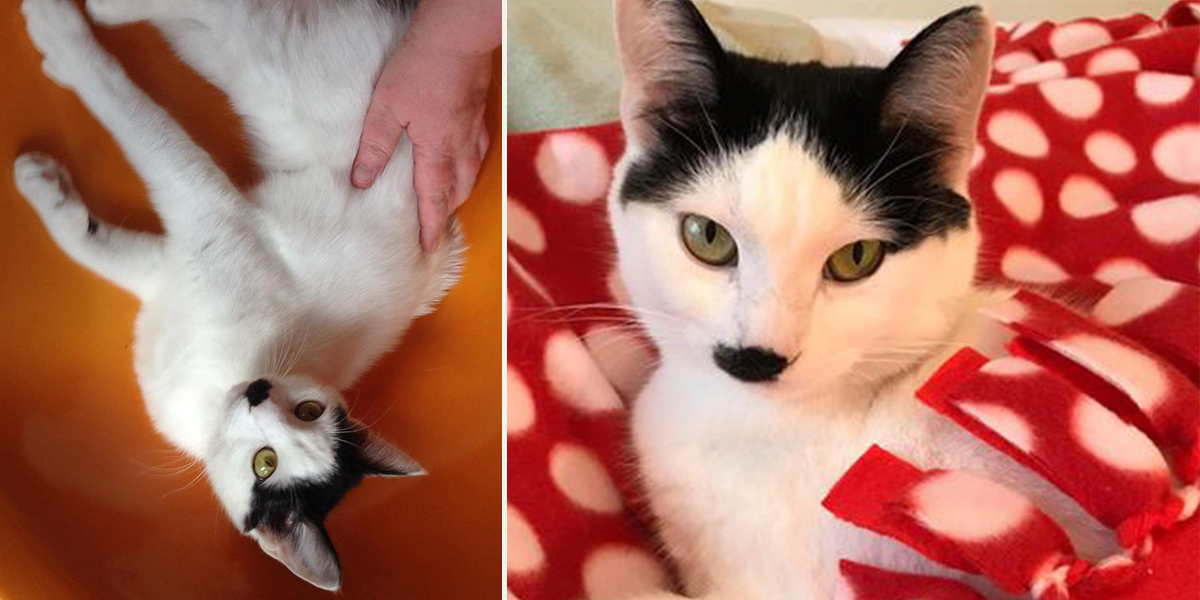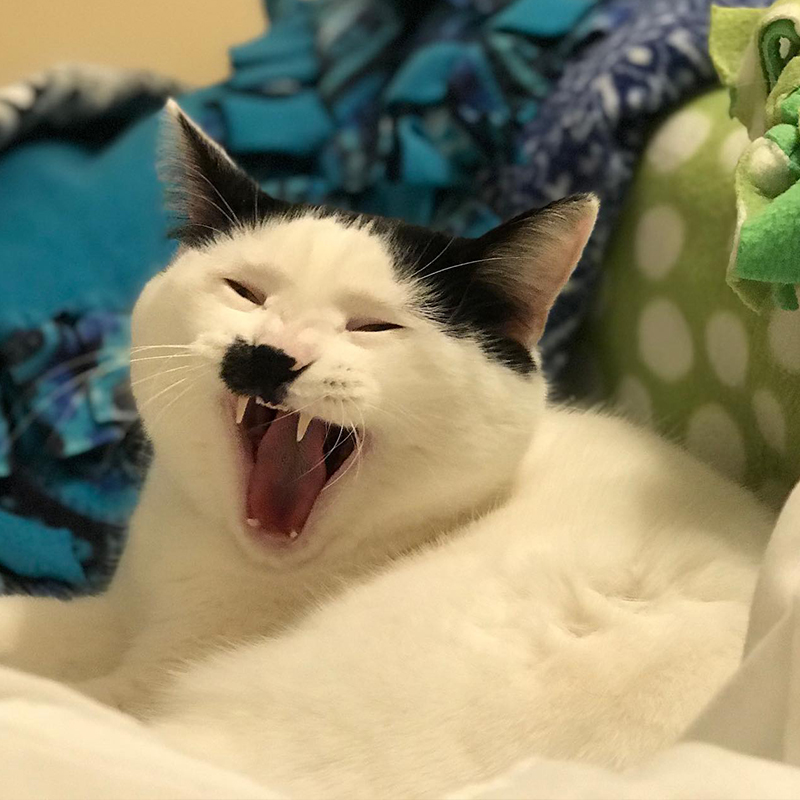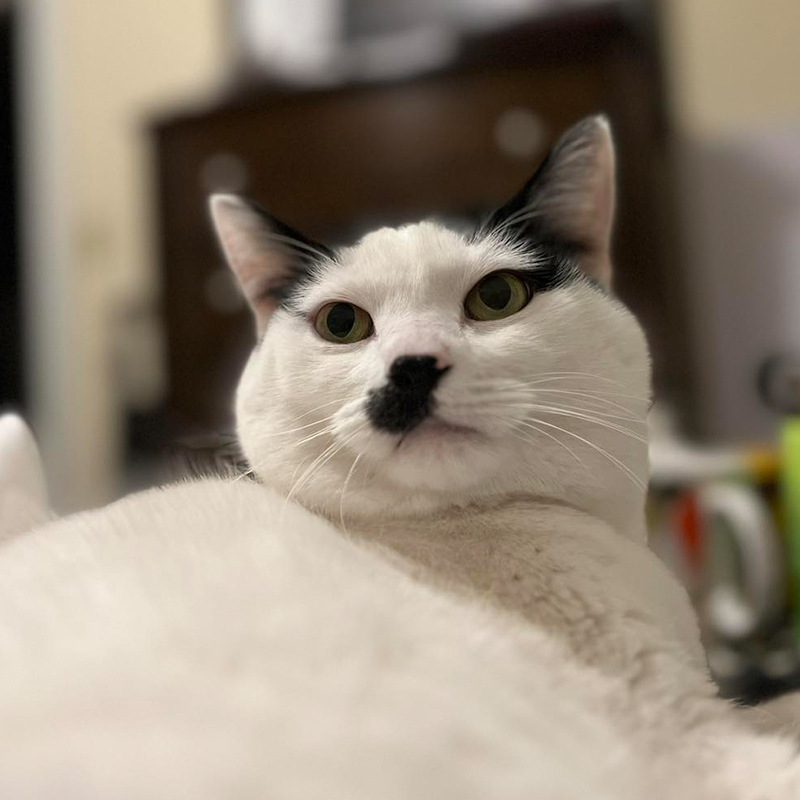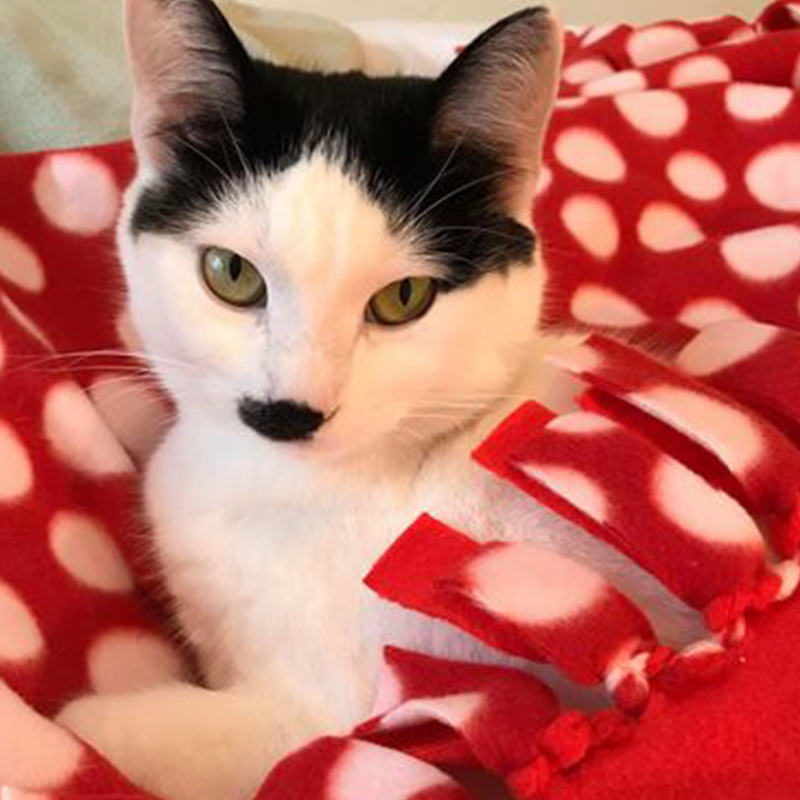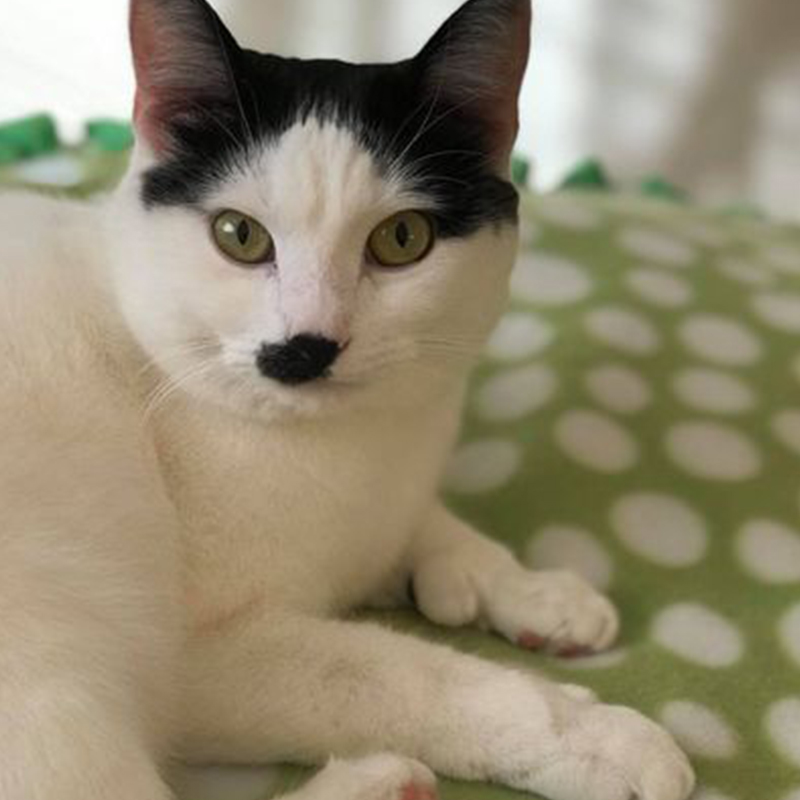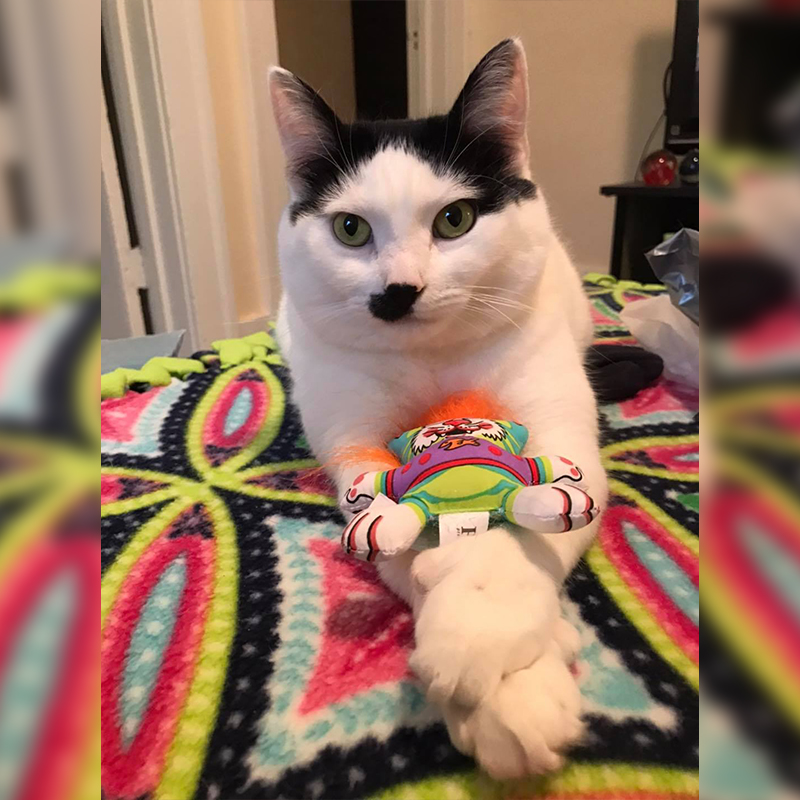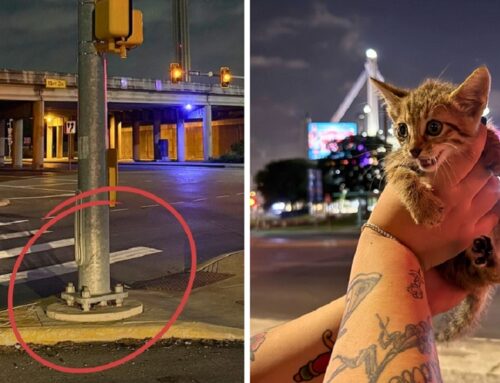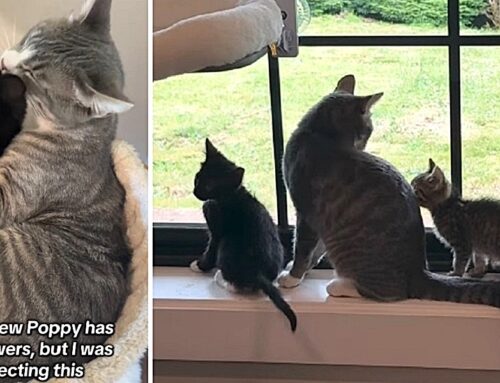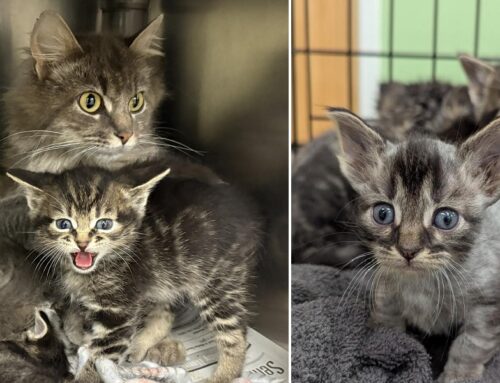We’re looking at an unusual condition, Feline Hyperesthesia (FHS). Although rare, it could explain why a cat appears twitchy and extremely oversensitive to touch. The condition is called “twitchy cat syndrome” or “rippling skin syndrome.” Affected cats may bite at their skin or suddenly lash out at people who try to pet them. It’s important to know that your cat does not dislike you; they could be experiencing considerable discomfort from the FHS.
Note: This information is for educational purposes only. As always, consult your veterinarian.
As the names suggest, symptoms include twitching, particularly their tails, and you may even see the skin rippling. It’s like a cat reacting to a flea bite, suddenly jumping and running as if bitten, even though no fleas are present. Calmly sleeping cats may suddenly jump, bite at their skin, and anxiously hide.
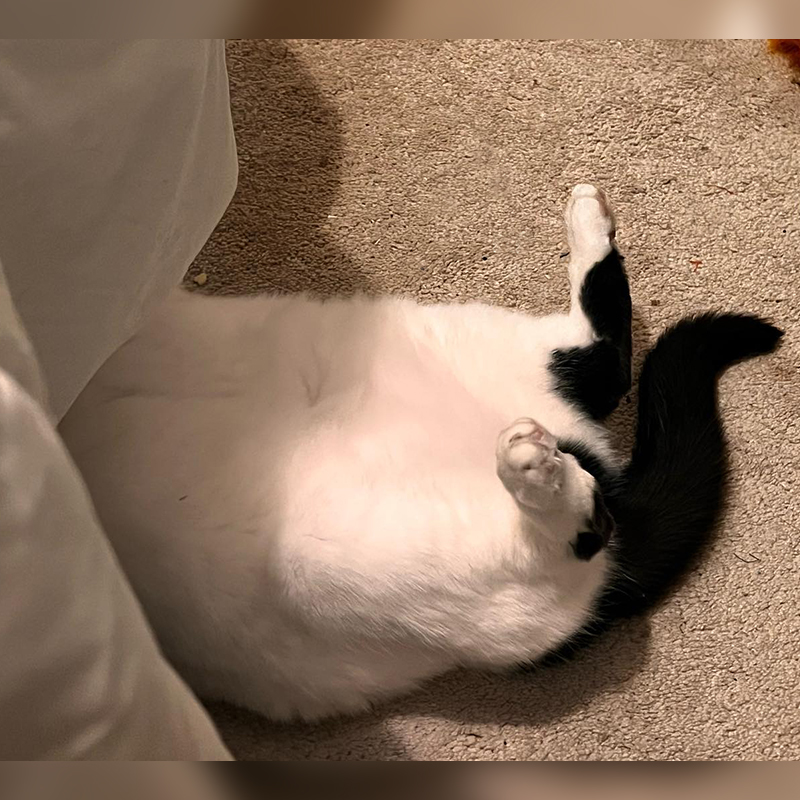
Josephine the Quirky Cat with FHS hides under the bed via Facebook
Of course, the obvious reaction is to suspect there are unseen fleas or mites around. Indeed, it may be easily confused with flea allergies, such as flea allergy dermatitis. Consequently, one might try many treatments in exasperation while the underlying problem, FHS, remains undiagnosed.
Even when FHS is suspected, diagnosis can be slow since many other possible causes, such as hyperthyroidism or nutritional deficiencies, must be ruled out.
Images are of Josephine the Quirky Cat with FHS (and kidney disease) via Facebook and on her blog.
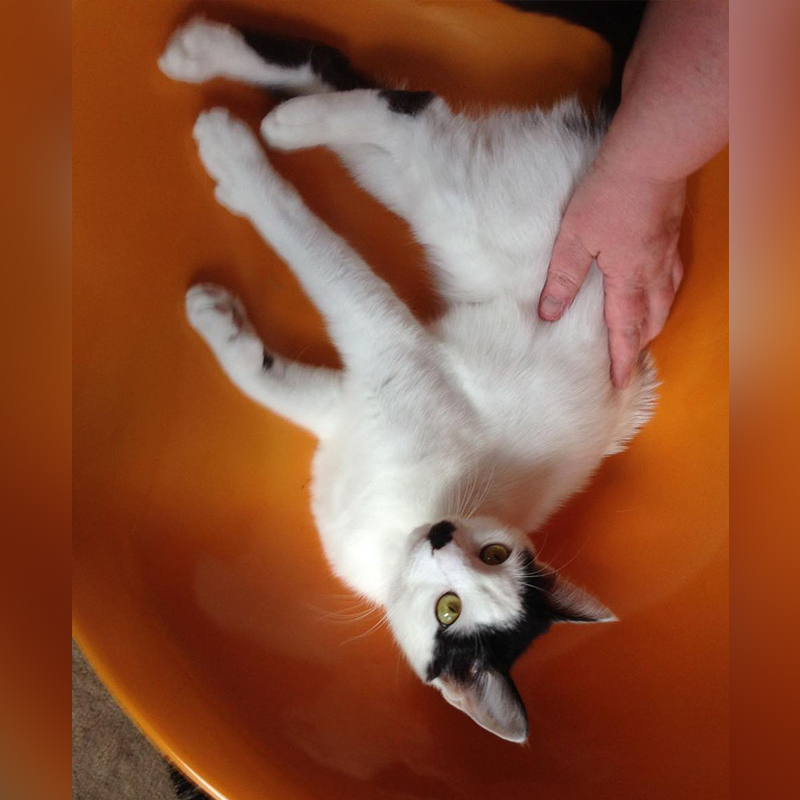
Josephine the Quirky Cat with FHS via Facebook
Is Feline Hyperesthesia Making Your Cat Feel Oversensitive?
According to Veterinarian Dr. Karen Becker, cats with Feline Hyperesthesia can suddenly go from content and sleeping to full-throttle wacky. The skin around the pelvis is often visibly irritated, and cats can bite at their skin, trying to find relief in vain.
Sometimes, the cat’s skin may visibly ripple from their shoulders to the tip of the tail. Other times, you may not see the rippling and instead notice bizarre, abrupt antics. Unlike naturally quirky and weird kitties like Marmalade, the behaviors are coming from pain and irritation.
“You may not see the skin ripple, but you go, ‘Oh my gosh, my cat just flipped out, out of the blue,’ and you don’t know why,” Becker says. (See video below.)
To help, we naturally want to reassure the cat and pet them. But touching their backs might make the cat feel worse, so they lash out angrily, which has to be emotionally hard for pet parents.
Symptoms That Might Indicate Twitchy Cat Syndrome
With Feline Hyperesthesia, there are many possible symptoms. Usually, it affects young cats from age one to seven.
- Pulling out tufts of hair and biting skin
- Obsessive grooming
- Sudden erratic behavior and mood swings
- Frequently tired
- Tail and body twitching, even resembling seizures
- Muscle spasms or rippling skin
- Avoiding touch or reacting aggressively
- Vocalizing frequently
- Chasing or attacking their tail
- Dilated, glassy pupils (mydriasis) or staring into space
As a result of pulling out tufts of hair and biting, the skin can unfortunately develop lesions and infections that cause ongoing itchiness.
Is There Treatment for FHS?
Anyone whose cat is experiencing so much discomfort wants to help them immediately. However, this condition’s causes remain mysterious and could be related to allergies and dermatological, neurological, behavioral, and musculoskeletal issues. Stress, anxiety, and diet may also trigger twitchy cat episodes.
For unknown reasons, Persian, Siamese, Abyssinian, and Burmese cats may be more likely to develop the condition.
Once confidently diagnosed, a vet can prescribe a treatment, but there is no cure for FHS. But as Josephine shows, cats with FHS can live happy and inspurrational lives. Look at what a beauty she is and her mama is doing a tremendous job helping inform everyone about life with FHS!
Dr. Beckers suggests alternative holistic treatments like veterinary acupuncture and chiropractic can be helpful. Such treatment can increase blood flow and circulation. Calming herbs and CBD for cats can help soothe them and reduce stress, but as always, it’s a good idea to discuss it with your vet first. They can also prescribe a diet to help alleviate inflammation, which could be related to allergens, carbohydrates, and preservatives, such as in dry kibble.
A hydrolyzed protein diet may help, according to recent research.
“These are sensitive cats, and you want to eliminate anything that can be exacerbating their sensitivity,” Dr. Becker explains.
As with FIV+ cats like Marmalade, it’s important to keep stresses to a minimum and provide them with many opportunities for active play and enrichment. (Like new toys, cat trees, or having some sun in a catio!)
You can find out more about cats living with FHS on Facebook at Josephine the Quirky Cat.
Video about Feline Hyperesthesia by Dr. Karen Becker:


